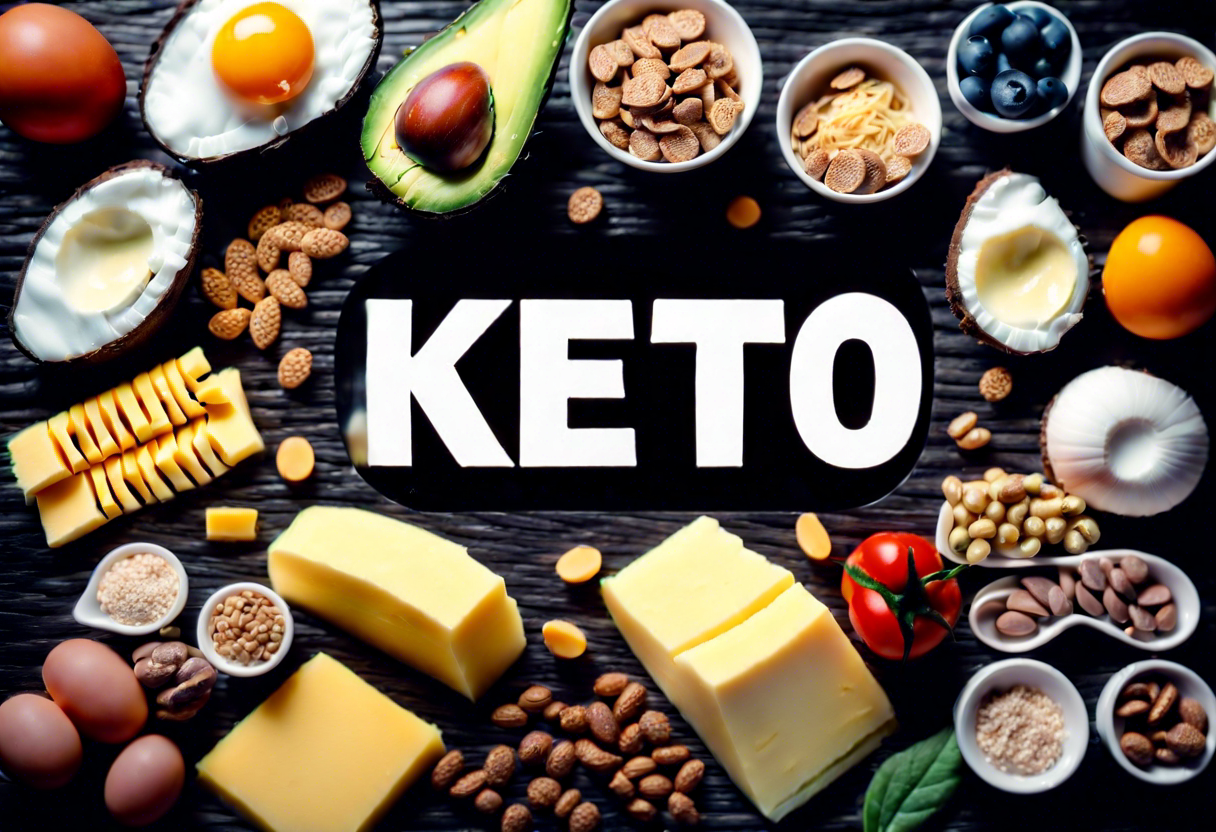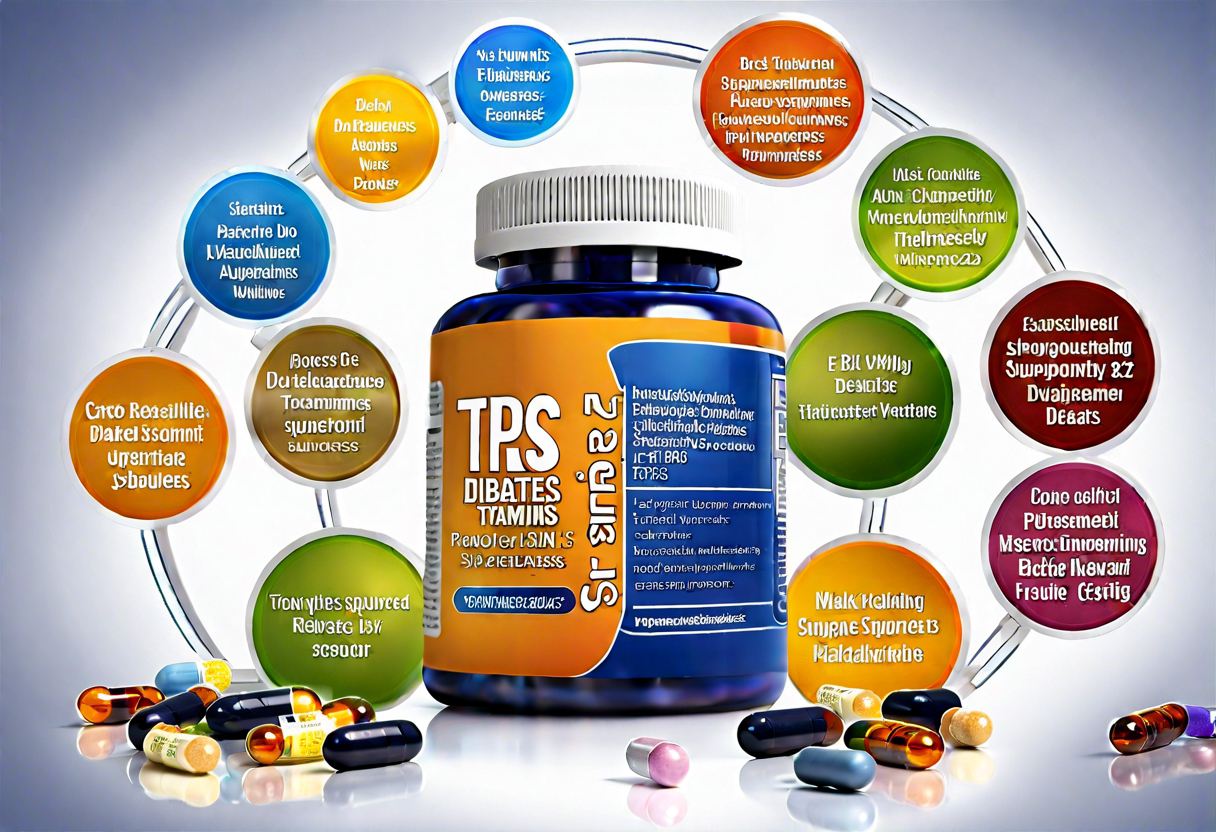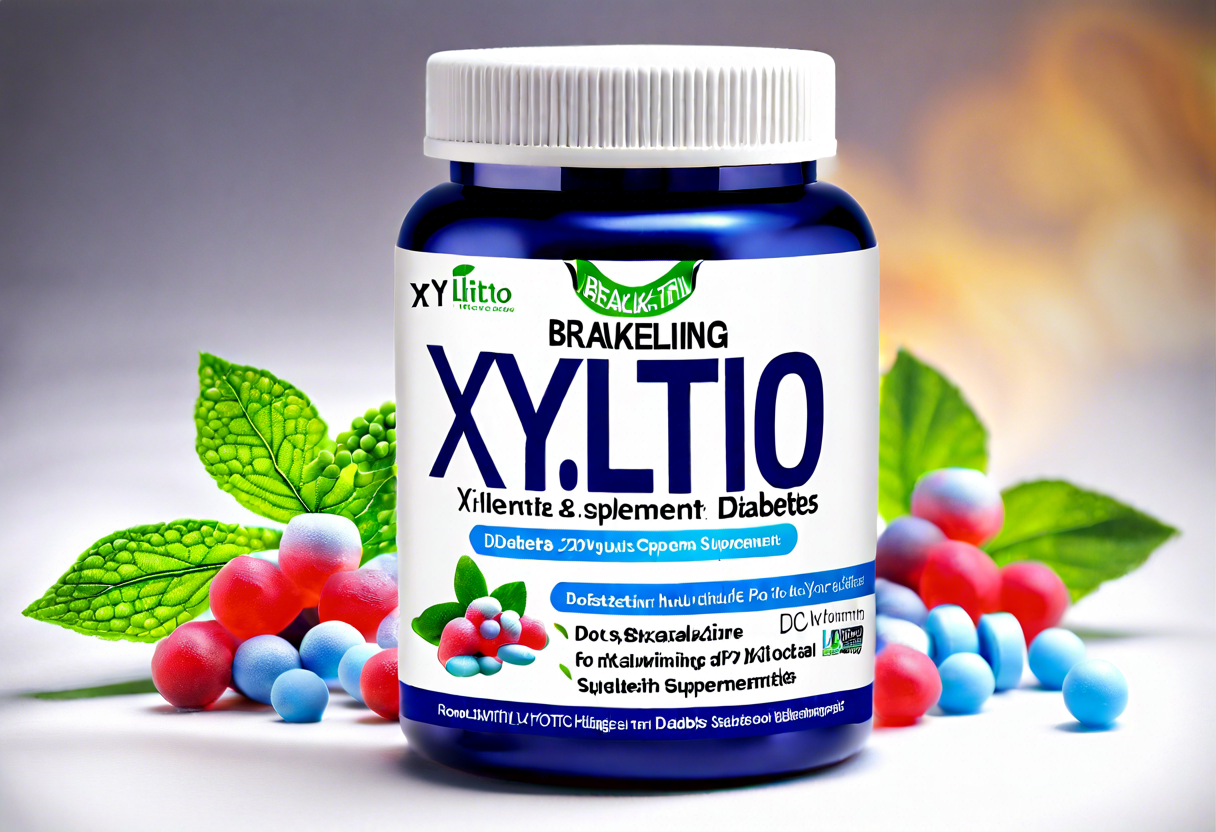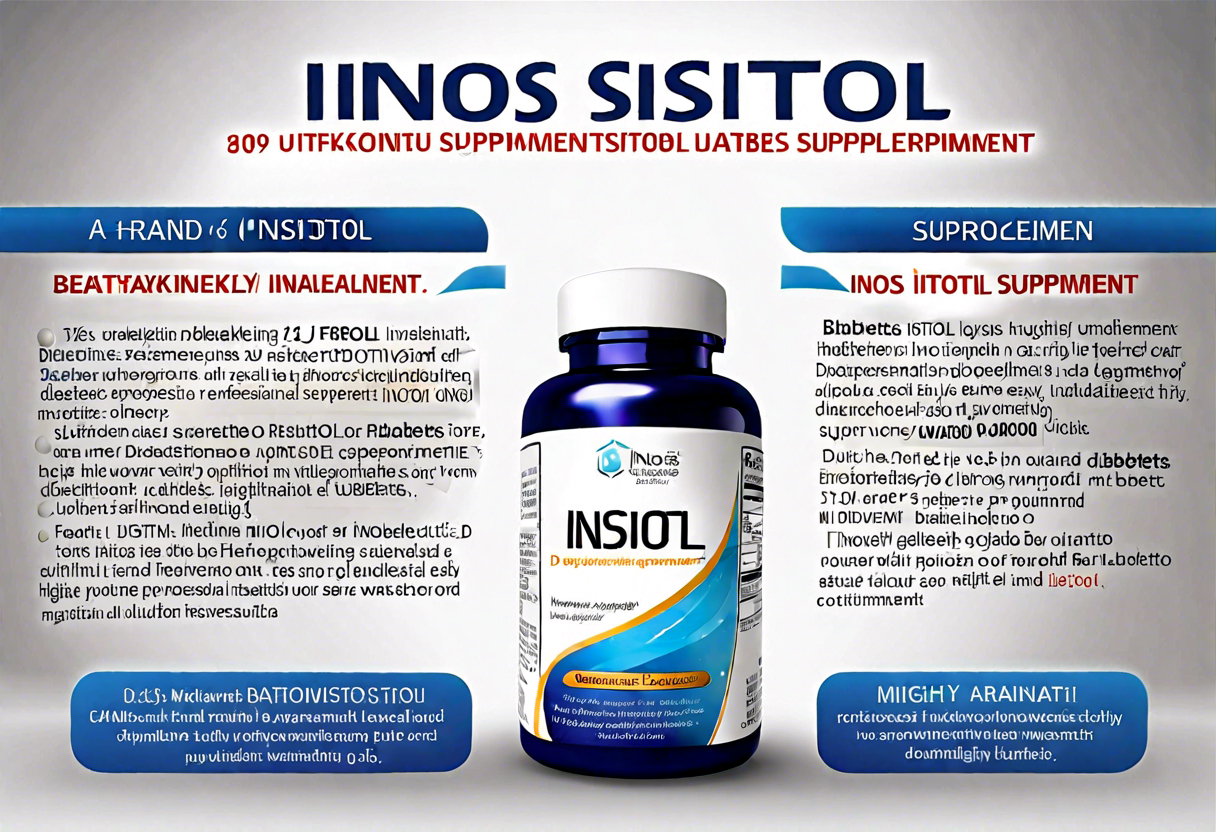The Recommended Carb Intake for the Keto Diet
The keto diet is a low-carb, high-fat diet that has gained popularity for its potential weight loss benefits and ability to improve blood sugar control. One of the key principles of the keto diet is to restrict carbohydrate intake to achieve a state of ketosis, where the body uses fat for fuel instead of glucose. So, how many carbs should you consume on the keto diet?
The recommended carb intake for the keto diet typically ranges from 20 to 50 grams of net carbs per day. Net carbs are calculated by subtracting the grams of fiber from the total grams of carbohydrates in a food. This method is used because fiber doesn’t significantly impact blood sugar levels and can be subtracted from the total carbs.
Restricting carb intake to this range is crucial for entering and maintaining ketosis. Consuming fewer carbs forces the body to burn stored fat for energy, leading to weight loss. Additionally, low carb intake helps regulate blood sugar levels and insulin production, making it beneficial for individuals with diabetes or insulin resistance.
To determine the ideal number of carbs for your keto diet, it’s important to consider your individual needs and goals. Factors such as age, activity level, and metabolic health can influence carb tolerance. Some individuals may need to consume fewer than 20 grams of net carbs per day to reach and maintain ketosis, while others may be able to tolerate a slightly higher carb intake.
Tracking and monitoring your carb intake is essential to ensure you stay within the recommended range. Many people find it helpful to use mobile apps or online tools that provide nutritional information for various foods. These tools can help you keep track of your carb intake and make informed choices about the foods you eat.
It’s important to remember that not all carbs are created equal. On the keto diet, the focus is on consuming healthy, whole food sources of carbs such as vegetables, nuts, and seeds. These foods provide essential nutrients while keeping carb intake low. On the other hand, processed foods high in refined carbohydrates should be avoided as they can spike blood sugar levels and hinder weight loss efforts.
The recommended carb intake for the keto diet typically ranges from 20 to 50 grams of net carbs per day. Tracking and managing your carb intake is crucial to achieve and maintain ketosis. By prioritizing healthy, whole food sources of carbs and avoiding processed foods, you can maximize the benefits of the keto diet. Remember to consult with a healthcare professional or registered dietitian before making any significant changes to your diet.
How to Calculate the Ideal Number of Carbs for Your Keto Diet
As you embark on your keto diet journey, it’s essential to understand how to calculate the ideal number of carbs for your specific needs. While the standard recommendation for a keto diet is to limit carb intake to 20-50 grams per day, finding your optimal carb range depends on various factors such as your weight, activity level, and metabolic health. By personalizing your carb intake, you can maximize the benefits of ketosis and achieve your health goals.
One approach to determine your ideal carb range is through the net carb method. Net carbs are calculated by subtracting fiber and sugar alcohols from the total carb count of a food item. This method considers the impact of these carbs on blood sugar levels, which is crucial for maintaining ketosis. Generally, individuals on a keto diet aim to consume no more than 20-30 grams of net carbs per day.
To calculate your daily carb allowance, start by establishing your daily calorie goal. This can be determined based on factors like weight loss goals, activity level, and metabolic rate. Since carbohydrates provide 4 calories per gram, you can allocate a portion of your calorie goal toward carbs. For example, if your daily calorie goal is 1500 calories and you choose to dedicate 10% of those calories to carbs, you would be consuming 150 calories from carbs per day.
To convert the calorie allocation to grams, divide the total calories by the number of calories per gram of carbs. Carbohydrates contain approximately 4 calories per gram, so in this example, 150 calories from carbs would be equivalent to 37.5 grams of carbs. Therefore, consuming around 37 grams of carbs per day would help you stay within your desired carb range.
Keep in mind that individual responses to carb intake may vary. Some individuals may need to consume fewer carbs to achieve ketosis, while others may be able to tolerate slightly higher levels. Testing your blood ketone levels using a ketone meter is a reliable way to assess your body’s response to different carb intake levels.
Remember, the keto diet is a low-carb, high-fat diet that encourages the body to burn fat for fuel instead of carbohydrates. By carefully calculating and tracking your carb intake, you can maintain ketosis and optimize your weight loss or health goals. As always, it’s essential to consult with a healthcare professional or a registered dietitian before making any significant changes to your diet or starting a new eating plan.
For more information on calculating your ideal carb intake and personalized keto diet guidelines, you can visit reputable sources such as Healthline or Diet Doctor. These websites provide comprehensive resources on the keto diet, including tips, recipes, and support to help you navigate your keto journey successfully.
So, remember to personalize your carb intake, track your progress, and consult with professionals to make your keto diet a successful and enjoyable experience.
The Effects of Consuming Too Many Carbs on the Keto Diet
Consuming too many carbs can have detrimental effects on the effectiveness of the keto diet. The main principle of the keto diet is to significantly reduce carbohydrate intake and replace it with healthy fats. By doing so, the body enters a state of ketosis, where it burns fat for fuel instead of relying on carbohydrates.
When you consume too many carbs on the keto diet, it can disrupt this state of ketosis. Excessive carb consumption can cause a spike in blood sugar levels, leading to an increase in insulin production. Insulin is responsible for regulating blood sugar levels and storing excess glucose as fat. This means that consuming too many carbs can hinder your body’s ability to burn fat and achieve the desired benefits of a ketogenic diet.
Another effect of consuming too many carbs on the keto diet is increased cravings and hunger. Carbohydrates, particularly those high in simple sugars, can cause a rapid spike and subsequent drop in blood sugar levels. This can leave you feeling hungry and craving more carbs, leading to a cycle of overeating and sabotaging your efforts to stay in ketosis.
Furthermore, consuming too many carbs can hinder weight loss progress on the keto diet. Since the primary goal of the keto diet is to burn fat for fuel, excessive carb intake can hinder fat burning and lead to stalled weight loss or even weight gain. It’s important to monitor your carbohydrate intake closely to ensure that you stay within the recommended range for the keto diet.
To avoid the negative effects of consuming too many carbs on the keto diet, it’s essential to track and manage your carbohydrate intake effectively. Start by calculating your personal ideal number of carbs for the keto diet. This can vary depending on factors such as your weight, activity level, and overall health goals. Aim to stay within the recommended range of 20-50 grams of net carbs per day to achieve and maintain ketosis.
Tracking your carb intake using a food diary or mobile app can be helpful in managing your carbohydrate consumption. Pay attention to the quality of carbs you consume as well. Focus on incorporating low-carb, nutrient-dense foods such as leafy greens, non-starchy vegetables, and healthy fats into your meals. Avoid high-carb processed foods and sugary snacks that can easily derail your progress on the keto diet.
Remember, maintaining the proper balance of macronutrients is key to a successful keto diet. While reducing carb intake is vital, it’s also important to consume an adequate amount of protein and healthy fats. Strive for a moderate protein intake and ensure that the majority of your calories come from healthy fats. This will help support ketosis and provide your body with the necessary nutrients for optimal functioning.
Consuming too many carbs on the keto diet can have negative effects on your progress and hinder your ability to achieve ketosis. By closely monitoring your carbohydrate intake, tracking your macros, and focusing on quality low-carb foods, you can maintain the benefits of the keto diet and reach your health and weight loss goals.
For more information on the effects of carb consumption on the keto diet, you can visit Healthline’s comprehensive guide on carb intake for the keto diet.
Keto Diet: Balancing Macronutrients to Minimize Carb Intake
When following a keto diet, one of the key principles is to minimize carbohydrate intake to achieve a state of ketosis, where the body burns fat for fuel instead of carbohydrates. However, it is important to ensure that other macronutrients are properly balanced while keeping carb intake low. Let’s explore some strategies for achieving this balance.
1. Increase healthy fats: Since carbs are restricted on the keto diet, healthy fats become an important energy source. foods like avocados, nuts, seeds, and oils can help provide the necessary calories to sustain energy levels.
2. Consume moderate protein: While protein is essential for muscle repair and maintenance, excessive intake can hinder ketosis. It is recommended to consume a moderate amount of protein, such as lean meats, eggs, dairy products, and plant-based protein sources.
3. Choose low-carb vegetables: Non-starchy vegetables are rich in essential vitamins, minerals, and fiber while being low in carbs. Incorporate vegetables like leafy greens, broccoli, cauliflower, zucchini, and bell peppers to add variety and nutrients to your meals.
4. Be mindful of hidden carbs: Some foods may appear low in carbs but can still contain hidden sugars or starches. It is important to read food labels carefully and be aware of common sources of hidden carbs, such as sauces, condiments, and processed foods.
5. Plan meals and track intake: Keeping track of your macronutrient intake is crucial for maintaining ketosis. Use a food diary or a reliable tracking app to monitor your daily carb consumption. This will help you identify any areas where you may need to adjust your food choices.
6. Stay hydrated: Drinking enough water is essential for overall health and can also help curb cravings. Additionally, dehydration can mask itself as hunger, leading to unnecessary snacking. Aim to drink at least 8 glasses of water per day.
7. Seek professional guidance: If you are new to the keto diet or have specific dietary requirements, consulting a registered dietitian or a healthcare professional can provide personalized guidance and ensure you are meeting your nutritional needs while minimizing carb intake.
By actively balancing other macronutrients while keeping carb intake low, you can optimize the benefits of the keto diet while ensuring your body receives the essential nutrients it needs. Remember to listen to your body, stay consistent, and make adjustments as necessary to achieve your health and wellness goals.
For more information on keto diet tips and recipes, you can visit websites like Diet Doctor or Ruled.me.
Tips for Tracking and Managing Carb Intake on the Keto Diet
When following a ketogenic diet, tracking and managing your carb intake is crucial for achieving and maintaining a state of ketosis. By limiting your carb consumption, your body is forced to burn fat for fuel instead of relying on glucose from carbohydrates. To help you effectively track and manage your carb intake on the keto diet, here are some valuable tips:
1. Educate Yourself on Low-Carb Foods: Familiarize yourself with the carb content of various foods. Higher-carb foods such as grains, legumes, and sugary treats should be strictly limited or avoided altogether. Instead, focus on incorporating low-carb options like green leafy vegetables, nuts, seeds, and healthy fats into your meals.
2. Utilize Food Tracking Apps: Take advantage of food tracking apps like MyFitnessPal or Carb Manager to monitor your daily carb intake. These apps provide a comprehensive database of foods, allowing you to easily track your macros and ensure you stay within your desired carb limit.
3. Plan Ahead and Meal Prep: Planning your meals in advance can help you stay on track with your carb goals. Plan your meals for the week, create a detailed shopping list, and meal prep in advance to minimize the temptation of consuming high-carb options when hunger strikes.
4. Read Food Labels: Pay close attention to food labels when grocery shopping. Look for hidden sources of carbs such as added sugars or hidden starches. Opt for products that are labeled as low-carb or keto-friendly to make your choices easier.
5. Keep Healthy Low-Carb Snacks on Hand: To prevent succumbing to carb cravings, have keto-friendly snacks readily available. Nuts, seeds, jerky, and cheese are excellent options that can keep you satisfied between meals without derailing your progress.
6. Be Mindful of Portion Sizes: While low-carb foods may be allowed on the keto diet, portion control is still important. Some foods, like nuts or avocados, are high in healthy fats but can also be relatively high in calories. Moderation is key to ensure you maintain a calorie deficit for weight loss if that is your goal.
7. Stay Hydrated: Drinking plenty of water is crucial on the keto diet. Not only does it help with digestion and overall body function, but it can also help curb cravings and keep you feeling fuller for longer.
Tracking and managing your carb intake on the keto diet takes practice and consistency. It’s essential to stay vigilant and make adjustments as needed to stay within your target range. Remember, each individual may have different carb tolerance levels, so it’s vital to find what works best for you. By implementing these tips, you’ll be well on your way to achieving your health and weight loss goals on the keto diet.
For more information and resources related to the keto diet and managing carb intake, check out Healthline’s comprehensive guide to the ketogenic diet.
Conclusion
It is important to closely monitor and control your carbohydrate intake while following the keto diet. The recommended carb intake for the keto diet typically ranges from 20 to 50 grams per day. However, it is essential to calculate the ideal number of carbs for your specific needs based on factors such as age, activity level, and weight loss goals.
Calculating the ideal number of carbs for your keto diet can be achieved by determining your daily calorie intake and macronutrient split. Typically, carbs are limited to around 5% of your total daily calories. To calculate the number of carbs, multiply the total daily calories by 0.05 and then divide by 4 (each gram of carbohydrate contains 4 calories). This will give you the recommended number of carbs to consume per day.
Consuming too many carbs on the keto diet can have adverse effects and hinder the state of ketosis. Exceeding the recommended carb intake can cause a spike in blood sugar levels and lead to fluctuations in energy levels, difficulty in weight loss, and potentially even knock you out of ketosis. To achieve and maintain ketosis, it is crucial to stay within the recommended carb range.
While focusing on keeping carb intake low, it is equally important to balance the other macronutrients in your diet. The keto diet emphasizes a high intake of healthy fats and a moderate intake of protein. a variety of healthy fats such as avocados, nuts, and coconut oil, along with lean sources of protein like chicken, fish, and tofu, will help maintain a balanced macronutrient ratio while keeping carb intake low.
Tracking and managing your carb intake on the keto diet is crucial for achieving your health and weight loss goals. Using tools such as food journals or mobile apps can help you keep track of the carbs you consume. Reading nutrition labels, familiarizing yourself with low-carb food options, and planning meals in advance can also assist in managing your carb intake effectively.
Following a keto diet requires careful consideration of your daily carb intake. The recommended carb intake for the keto diet ranges from 20 to 50 grams per day and can be calculated based on your specific needs. Consuming too many carbs can have negative effects on ketosis and hinder weight loss progress. Balancing other macronutrients while keeping carb intake low is essential for a well-rounded keto diet. By tracking and managing your carb intake through tools and mindful food choices, you can successfully navigate the keto diet and reach your health goals.









